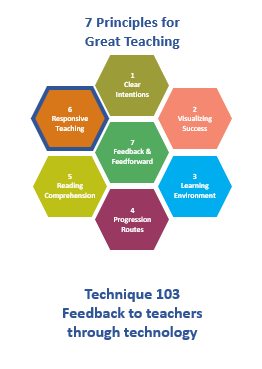Technique of the week
The Great Teaching: from principles to practice handbook has 157 practical techniques, all designed to meet the needs of the seven principles, set out in seven chapters. One technique from each principle will be freely downloadable each week from this site.
The seven principles:
-
Teachers should share and clarify the learning intentions of the lesson(s) so that students are engaged, understand, and can picture their goals.
-
Teachers should ensure that all learners understand the success criteria for their learning tasks and activities and have a clear picture of what success looks like.
-
Teachers should create a safe, welcoming, and trusting learning environment with fair, clear, consistent, and public systems of classroom management. Group activity is purposeful and well structured.
-
Learning tasks should build upon prior learning, make connections, and have clearly defined progression routes that meet the needs of individuals, including support and challenge. Teachers should have high expectations for all learners.
-
Reading comprehension should be encouraged. Scaffolding, useful initially, should be gradually withdrawn as learners move towards mastery and deeper understanding. Small group collaborative activity should be used when appropriate.
-
Teachers should receive feedback on levels of understanding through regular questioning which seeks to involve all learners. When teachers identify misconceptions, they intervene, whether it be at individual, group, or whole class level. Teachers should seek to develop fluency and embed learning through techniques such as interleaving, retrieval practice, spaced learning.
-
Feedback to learners should be ongoing and can include, at different times, written, verbal, whole class, peer, and self-assessment. Teachers should find ways to ensure that such feedback is acted upon by the learners (feedforward).














